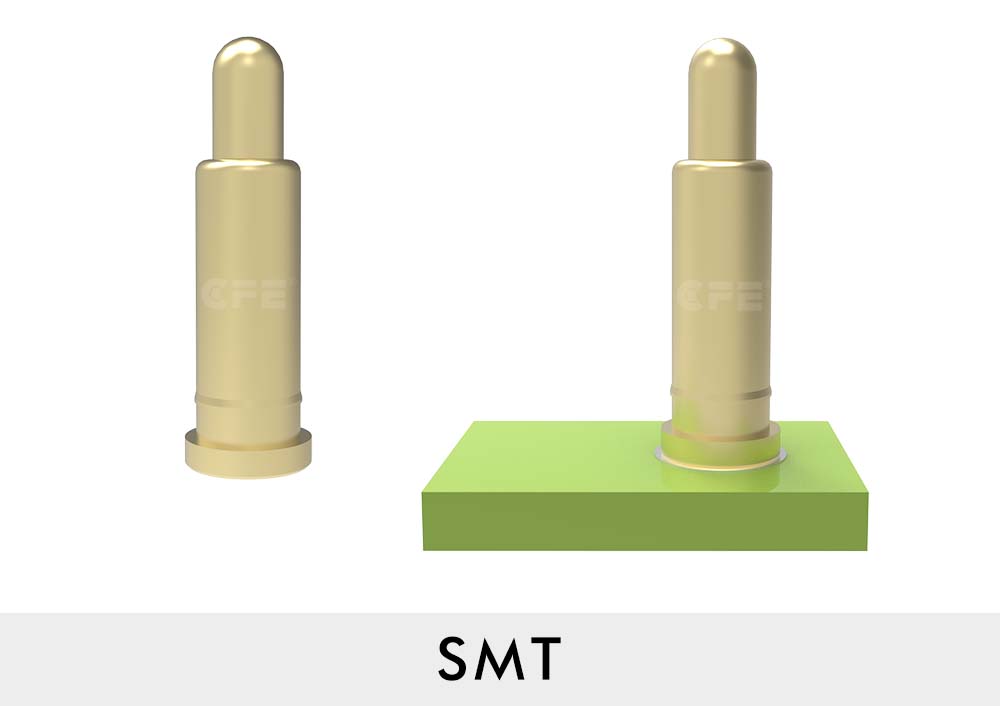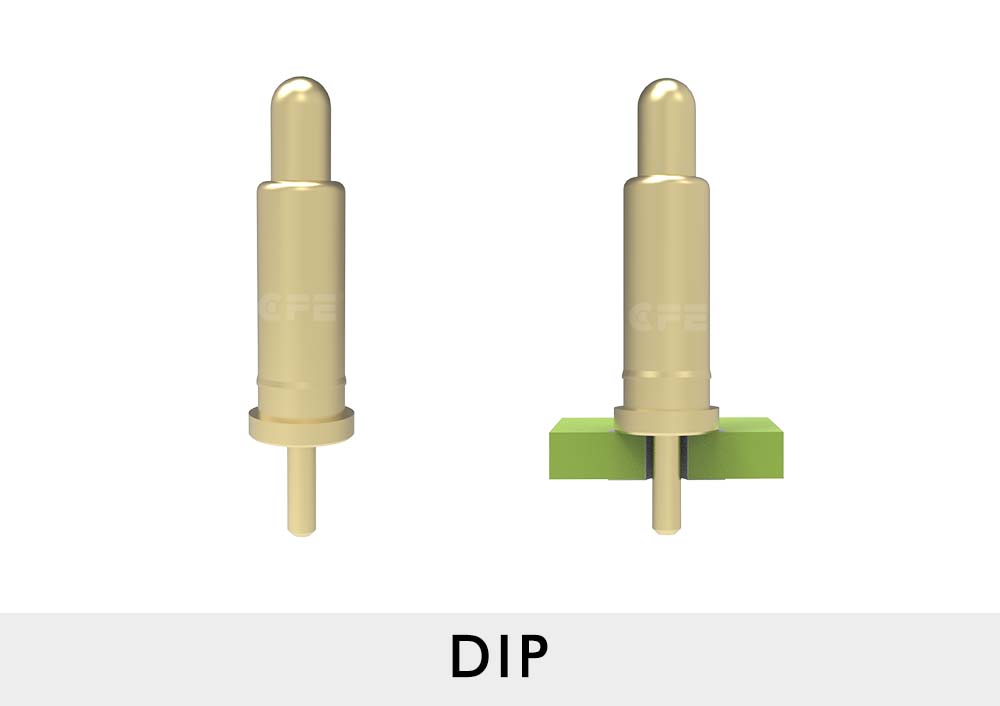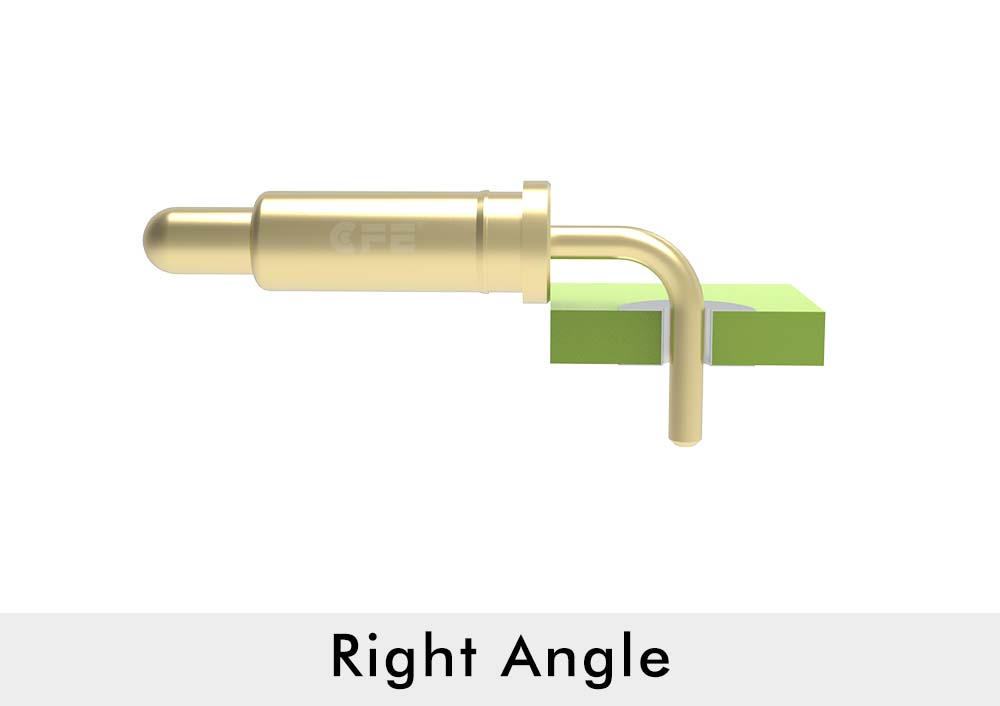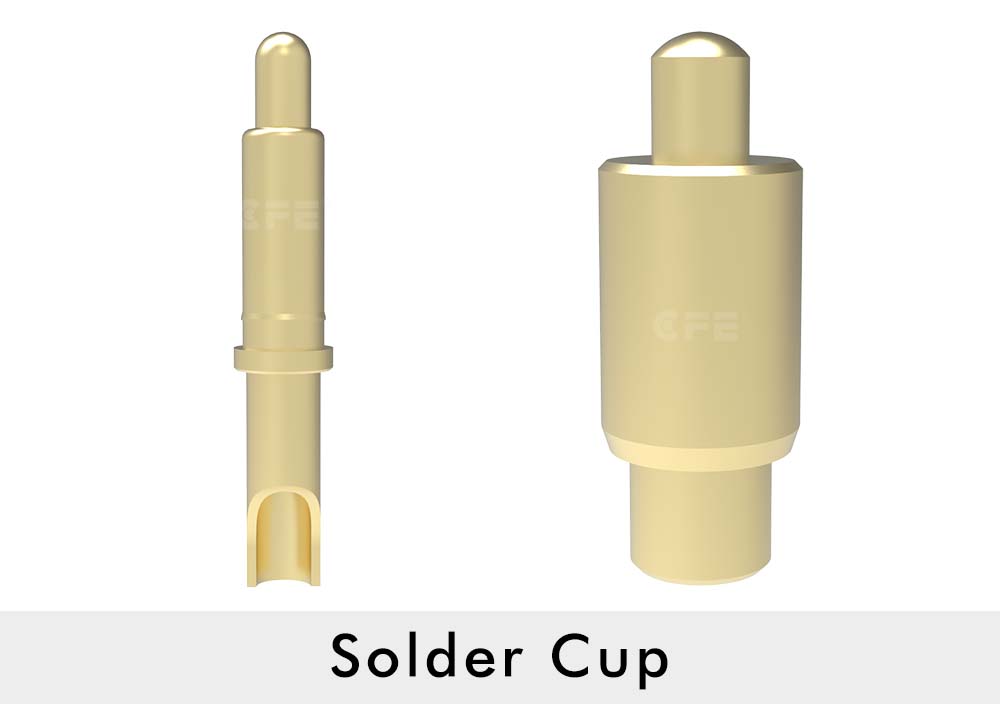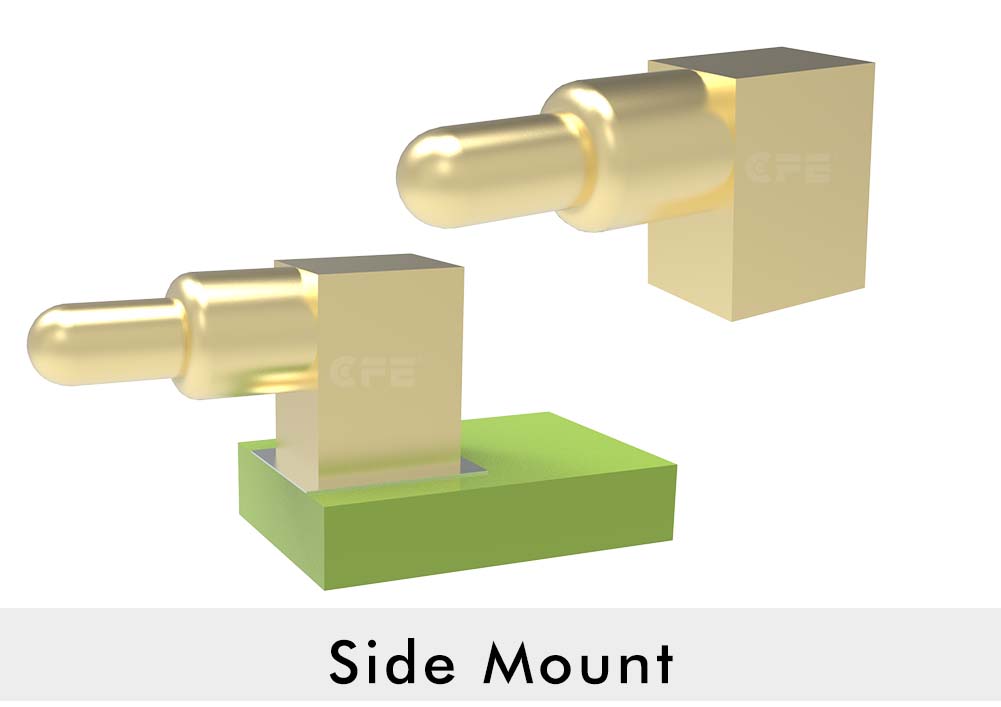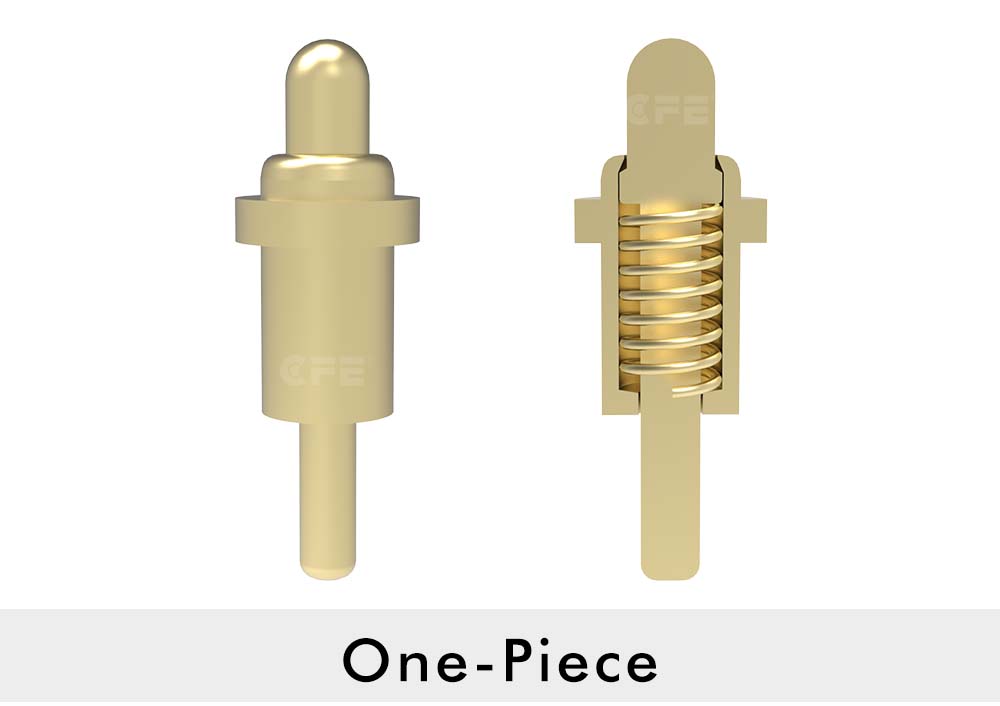1.SMT pogo pin
- It can save PCB space and can be applied to PCBA circuit design with smaller pitch.
- The contact area with the PCBA is large. The SMT pogo pin has good stability and is not easy to skew.
- The height can’t be too high, too high is easy to skew.
- Suitable for mass production, and the cost is low.
2. DIP pogo pin
- When DIP soldering, more tin is used, the contact with the PCB is more stable and firmer.
- There are more materials than SMT, slightly higher than SMT cost.
3.Right angle pogo pin
- Like DIP, it has the positioning effect and will be no offset during welding.
- The connection method is changed from 90° docking to 90°-180° to meet the special needs of customers.
- Secondary processing is required, increasing the cost.
4.Solder cup pogo pin
- Suitable for cable end, easy to solder with wire.
- Generally used for structures with too large current or a large number of pins that wire needs to be welded.
- The processing is more complicated and the cost is higher.
5.Side mount pogo pin
- It can achieve the connection structure parallel to the PCBA, and meet the special connection requirements of customers in the narrow height direction.
- The contact area with the PCB board is large, which can ensure the stability of the current.
6.One-piece pogo pin
- One-piece can achieve the design of high current pogo pin to meet the special needs of customers, and the current is straight through, which can avoid poor conduction caused by the insulating medium such as grease entering the inside of the pogo pin barrel.
- It can only be adapted to the special needs of customers.

